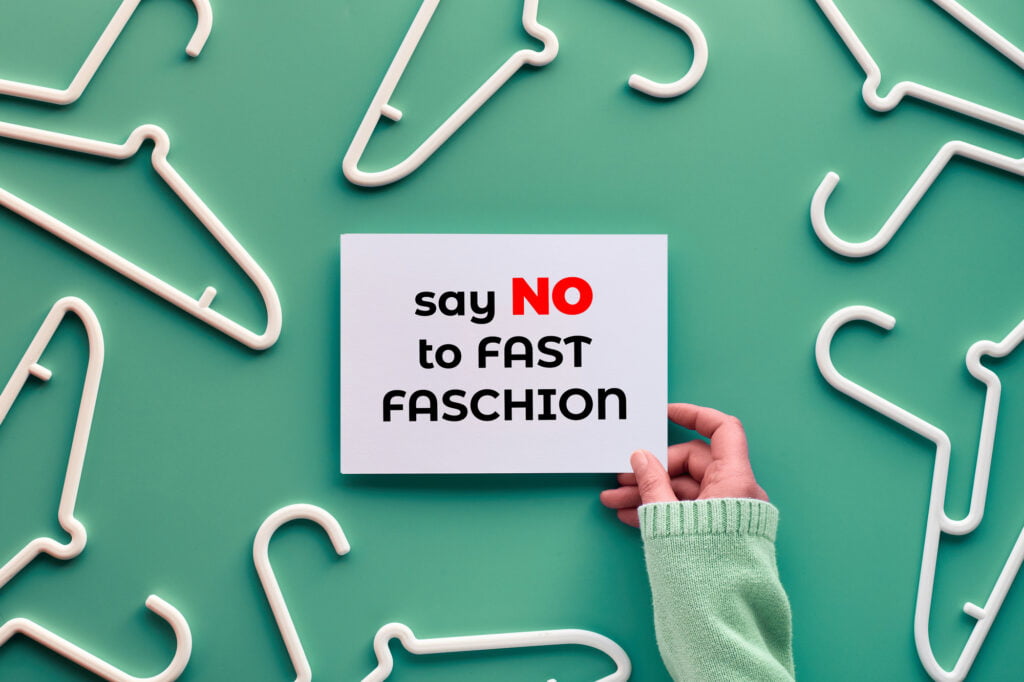Fast fashion is popular for a lot of good reasons. It’s affordable, convenient, and the clothes are often stylish. However, the problems with fast fashion are more significant than you might think.
Problems with fast fashion are not new, but they have been intensified by the advancement of technology and globalization. In this blog post, we’ll discuss 10 problems that people face when they buy fast fashion clothing.
Why is Fast Fashion a Problem?
Fast fashion is a global phenomenon that has revolutionized the clothing industry by providing trendy, inexpensive clothing to consumers at an unprecedented pace. However, the fast fashion business model is not without significant drawbacks.
The industry’s rapid and low-cost production comes with severe environmental and social consequences. Fast fashion not only lowers the quality of the garments, but it also promotes a “throwaway culture.” We buy more clothes than we need, only to dispose of them shortly after. Furthermore, the people who make these clothes often work in unsafe conditions, and they are paid very little. Fast fashion is unsustainable, both for the planet and the people involved in the manufacturing process. We need to consider the impact of our habits and opt for more sustainable and ethical options.

10 Key Problems With Fast Fashion
1. Low Quality
In order to offer low prices, fast fashion companies have been able to reduce their costs by purchasing the cheapest materials and using automated machines instead of skilled labor in manufacturing processes.
Many problems with fast fashion clothing stem from quality problems in both material and craftsmanship. For example, a tee-shirt might be made out of a thin fabric that quickly loses its shape.
2. Negative Environmental impact
Another problem with fast fashion is the environmental impact. For example, in order to keep up with production demands, some companies cut down rainforests or make use of child labor in countries where workers are not adequately protected by laws.
Fast fashion has also expanded the amount of clothing that’s produced every year when more clothes are being created and sold, more natural resources are being used to meet the demand.
3. Increased Consumption
One of the problems with fast fashion is that it has increased consumption patterns for consumers who want to keep up with both current trends as well as seasonal trends (i.e., buying new clothes every season).
As a result, there’s an increase in wastefulness because people are throwing away clothing items that have problems like stains or small tears instead of fixing them.
Related Post: 11 Sustainable Fashion Tips
4. Material Waste
Another environmental problem with fast fashion is the rise in demand for new clothes and discarding old ones has made secondhand shopping much less common, which means fewer used clothing donations to charities.
As a result, people who can’t afford brand-new items are forced to buy low-quality clothes from fast-fashion retailers.

This is why we suggest buying from these recommended Sustainable Fashion Brands
AMO
A collection of premium and ethic denim
THE RESORT CO
Eco-conscious and artisan vacation wear.
5. Increase in consumed energy
A third environmental problem with fast fashion is the energy used during production processes and transportation of materials as well as shipment of finished products to stores.
Fast fashion has had a significant impact on the environment because problems like greenhouse gas emissions, water pollution (i.e., dumping untreated dyes and chemicals into water), problems with waste management (i.e., burying or burning of large amounts of discarded clothing) have all increased as a result of the problems associated with fast fashion.
6. Unsafe Working Conditions
Another obvious problem with fast fashion is problems in the workplace. For example, some clothing manufacturers have had to close down factories because of problems like fires or building safety hazards that are caused by companies trying to save costs on production facilities.
The workers who remain employed often face unsafe working conditions where they’re exposed to hazardous chemicals and fabrics that can cause problems like respiratory problems or skin irritations.
7. Negative Impact on Developing Countries
Fast fashion has had a negative impact on the lives of workers in developing countries where labor laws are not enforced and factories do not provide adequate safety equipment for employees to wear during work hours.
Furthermore, many fast-fashion retailers have been accused of using child labor because some suppliers don’t follow laws and hire children as young as 12 years old to work long hours for extremely low wages.
8. The Supply Chain
Another problem with fast fashion is problems in the supply chain. For example, problems like forced labor (i.e., workers who are coerced into working against their will), underpayment of factory employees, hazardous working conditions, or unsafe transportation practices have often been problems for fast-fashion retailers and clothing manufacturers.
Fast fashion has problems in the workplace because suppliers may not be meeting labor standards, which can lead to problems like low pay rates or lack of health care benefits. Furthermore, employees have said that they are often unable to take leave when needed without being fired or penalized by management.
Suppliers have problems in the supply chain because they may be violating laws related to forced labor or child labor.
As a result, their practices can lead to problems like unfair pay for employees and unsafe working conditions that threaten workers’ health.
9. The Use of Synthetic Fibers
Another problem with fast fashion is problems associated with using synthetic fibers instead of natural fibers.
Fast fashion has problems associated with using synthetic fibers because these practices can cause problems like soil and water contamination as well as air pollution.
For example, discarded clothing that contains synthetic fibers can lead to problems with waste management because they do not biodegrade easily.
10. The Use of Toxic Dyes and Chemicals
Another problem with fast fashion is problems associated with using toxic dyes and chemicals during the production process.
For example, problems like air pollution (i.e., problems with dust and other chemicals in the air), water pollution as well as problems caused by discarded clothing are all problems for fast fashion retailers who use toxic dyes and chemicals.
Fast fashion problems with toxic dyes and chemicals because these practices can cause problems like soil and water contamination as well as air pollution.
For example, discarded clothing that contains synthetic fibers can lead to problems with waste management because they do not biodegrade easily.
Final Thoughts
Fast fashion is a big business, but it’s also having some negative impacts on the environment and society. Let us help you make smarter decisions about what to buy this season!


